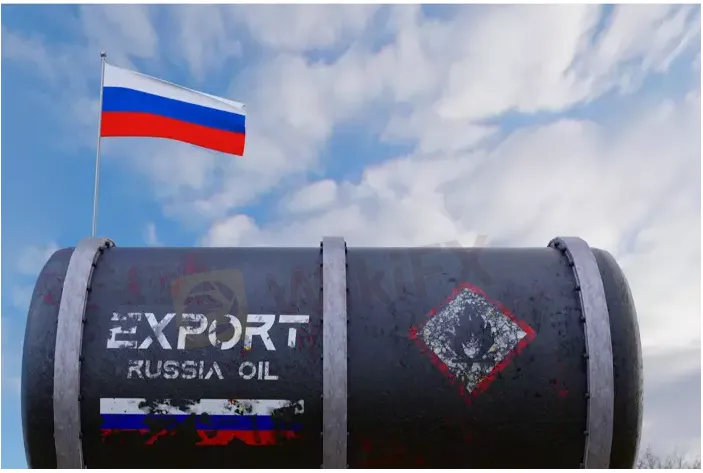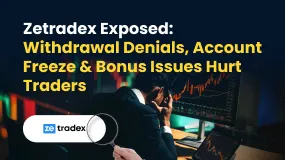简体中文
繁體中文
English
Pусский
日本語
ภาษาไทย
Tiếng Việt
Bahasa Indonesia
Español
हिन्दी
Filippiiniläinen
Français
Deutsch
Português
Türkçe
한국어
العربية
A Price Cap On Russian Oil May Lead To A Massive Rally
Abstract:Russia’s imports from Western countries collapsed due to sanctions, and the country does not need dollars or euros that cannot be used to buy Western goods.

Key Insights
G7 countries try to establish a mechanism that will reduce the price of Russias oil exports.
Meanwhile, Russia is suffering from a strong ruble as imports decline, which means the country does not need too many dollars or euros.
Attempts to impose a price cap on Russian oil may lead to a cut in supplies and push oil prices towards yearly highs.
G7 countries have recently announced their plans to impose a price-capping mechanism on Russian oil to reduce Russia‘s revenues. G7 plans to have a working tool by December 5. As a reminder, that’s when the EU plans to stop most imports of Russian oil.
When asked about the potential price cap, the head of the Russian Central Bank Elvira Nabiullina said that Russia would not sell oil to the countries that had imposed the price cap.
Oil markets ignore the issue and the potential supply problems that can arise from implementing the price cap. WTI oil failed to settle above the $120 level in June and has recently declined towards the $90 level.
However, the topic of the price cap on Russian oil will ultimately have more impact on oil price dynamics.
What Is The Idea Behind The Price Cap?
G7 countries plan to use their financial dominance to ban insurance, transportation and financing of Russian oil exports for countries that buy Russian oil above a specified price.
Some publications discussed a $40-60 price range that will keep Russia interested in producing oil.
To implement the price cap, G7 must create a “cartel of buyers”. If G7 countries are successful and the biggest consumers participate, Russia will face a tough choice. The country will have to either supply oil at a specified price or lose oil revenues, which are vital for its budget.
Russian Oil Exports
In June, Russia‘s oil exports totaled 7.4 million bpd, compared to the average of 7.75 million bpd in January – June. Sanctions have made Russian oil “toxic”, and Russia’s Urals is sold at a material discount to Brent oil.
According to Neste, the current spread between Urals and Brent exceeds $30. As Brent is trading near the $95 level, Russia sells its oil for about $65 per barrel.
In this situation, a price cap set at the $60 level does not look like a big problem for Russia as it is already selling its oil close to this level.
Russian Ruble And Sanctions
USD/RUB touched highs near the 120 level in March when foreign investors rushed out of the country while Russian citizens bought foreign currency in fear of a total financial collapse.
In response, the Russian Central Bank imposed currency controls. Meanwhile, Russias imports dropped due to sanctions. A combination of currency controls and declining imports strengthened the ruble. USD/RUB touched lows at the 50 level in late June before rebounding to 60. The strong ruble is a headache for Russian exporters, while importers cannot benefit from the situation as many potential suppliers cannot sell goods to them due to sanctions.
Russias current problem is the excessive flow of foreign currency. Even worse, the “virtual” money, dollars or euros, can turn to nothing at any time if the sanction war escalates. The Western countries have already frozen the assets of the Russian Central Bank, which is now working hard to minimize the use of dollars and euros inside Russia.
Put simply, Russia does not want too much foreign currency that can be frozen at any time, and that cannot be used to buy goods and services. This is important to understand when we consider the potential reaction to the oil price cap mechanism.
Politics Trumps Economics
The year 2022 is full of examples when countries implemented actions and measures that would hurt them economically if they believed that it was politically important to do so.
There is little reason to think that Russia would look at the oil price cap mechanism as an economic exercise. Most likely, the decision will be purely political.
As we have discussed above, Russia does not need foreign currency that cannot be used to buy goods. As a result, Russia may want to cut exports to countries that participate in the price cap mechanism and sell oil to willing buyers.
In 2021, Russia exported 2.4 million barrels to the EU. Assuming that Russian exports decline by about 4 million barrels in 2023 (extreme scenario), the price of oil may easily settle in the $100 – $150 range or even higher.
Interestingly, the revenue (in rubles, which is important for the Russian budget) that Russia will get by selling 7.4 million bpd at $60 per barrel with USD/RUB at 60 is almost equal to the revenue that Russia will receive by selling 3.4 million bpd at $100 per barrel with USD/RUB at 80. Before February, USD/RUB fluctuated near the 75 level, and the country could afford USD/RUB in the 70 – 90 range without triggering severe inflation.
All in all, it remains to be seen whether the price cap on Russian oil will be successful. To have a real chance for success, G7 will need China to join the deal. Politically, this scenario looks increasingly unlikely after Pelosis visit to Taiwan. China will still get Russian oil at a discount and get a competitive advantage over U.S. and EU if oil rallies towards the $150 level.
From a trading point of view, the attempt to implement the price cap mechanism may lead to a total cut of supplies to participating countries and lead to a massive rally in the oil market. However, traders will have to wait until October – November before markets will start to price in such scenarios.

Disclaimer:
The views in this article only represent the author's personal views, and do not constitute investment advice on this platform. This platform does not guarantee the accuracy, completeness and timeliness of the information in the article, and will not be liable for any loss caused by the use of or reliance on the information in the article.
Read more

WikiEXPO Dubai “Welcome Party” Concludes Successfully, Setting the Stage for the Main Event!
On the evening of November 10, 2025, the highly anticipated WikiEXPO Dubai “Welcome Party” was successfully held at the 6th Floor, Conrad Dubai, UAE. Serving as a “prelude” to the official opening of the expo, this event provided a high-end yet relaxed communication platform for representatives of global regulatory bodies, leaders of Fintech companies, renowned brokers, and senior executives of investment institutions.

VARIANSE Review: Traders Raise Deposit & Withdrawal Issues and High Commission & Swap Charges
Are you losing both while depositing and withdrawing your capital at VARIANSE? Does the broker give the currency conversion rate excuse for this? Have you been trapped with spreads charged higher than promised? Do you bear steep commission and swap charges at this broker? Traders frequently report these trading issues online. In today’s VARIANSE broker review, we have shared some trading complaints that have grabbed everyone’s attention. Take a look.

Is Fyntura a Regulated Broker? A Complete 2025 Broker Review
Fyntura is a broker accused by many users of posting fake reviews and running paid promotions with influencers to attract unsuspecting traders. Several users have faced withdrawal issues, blocked accounts, and manipulated trades. These are the real complaints and experiences shared by traders online. In this latest Fyntura Review 2025, you’ll learn about genuine user feedback, reported issues, and the broker’s credibility helping you make a better trading decision.

Zetradex Exposed: Withdrawal Denials, Account Freeze & Bonus Issues Hurt Traders
Do you constantly face withdrawal denials by Zetradex? Does the forex broker keep freezing your account and wiping out your capital? Have you also undergone issues concerning the Zetradex no deposit bonus? These trading issues have become apparent as the forex broker allegedly scams traders all over. In this Zetradex review article, we have demonstrated some complaints. Read them to get a feel of what happens to traders here.
WikiFX Broker
Latest News
BASF CEO: EU CO₂ Trading Is A "Destruction Mechanism" For European Industry
Is Fyntura a Regulated Broker? A Complete 2025 Broker Review
Zetradex Exposed: Withdrawal Denials, Account Freeze & Bonus Issues Hurt Traders
Is Forex Zone Trading Regulated and Licensed?
PINAKINE Broker India Review 2025: A Complete Guide to Safety and Services
Exness Restricted Countries List 2025 Explained
Is Uniglobe Markets Legit? A 2025 Simple Guide to Its Safety, Services, and User Warnings
Is Inzo Broker Safe or a Scam? An Evidence-Based Analysis for Traders
WikiEXPO Dubai 2025 “Welcome Party” Kicks Off Tonight!
He Trusted a WhatsApp Group and Lost RM659,000
Currency Calculator



